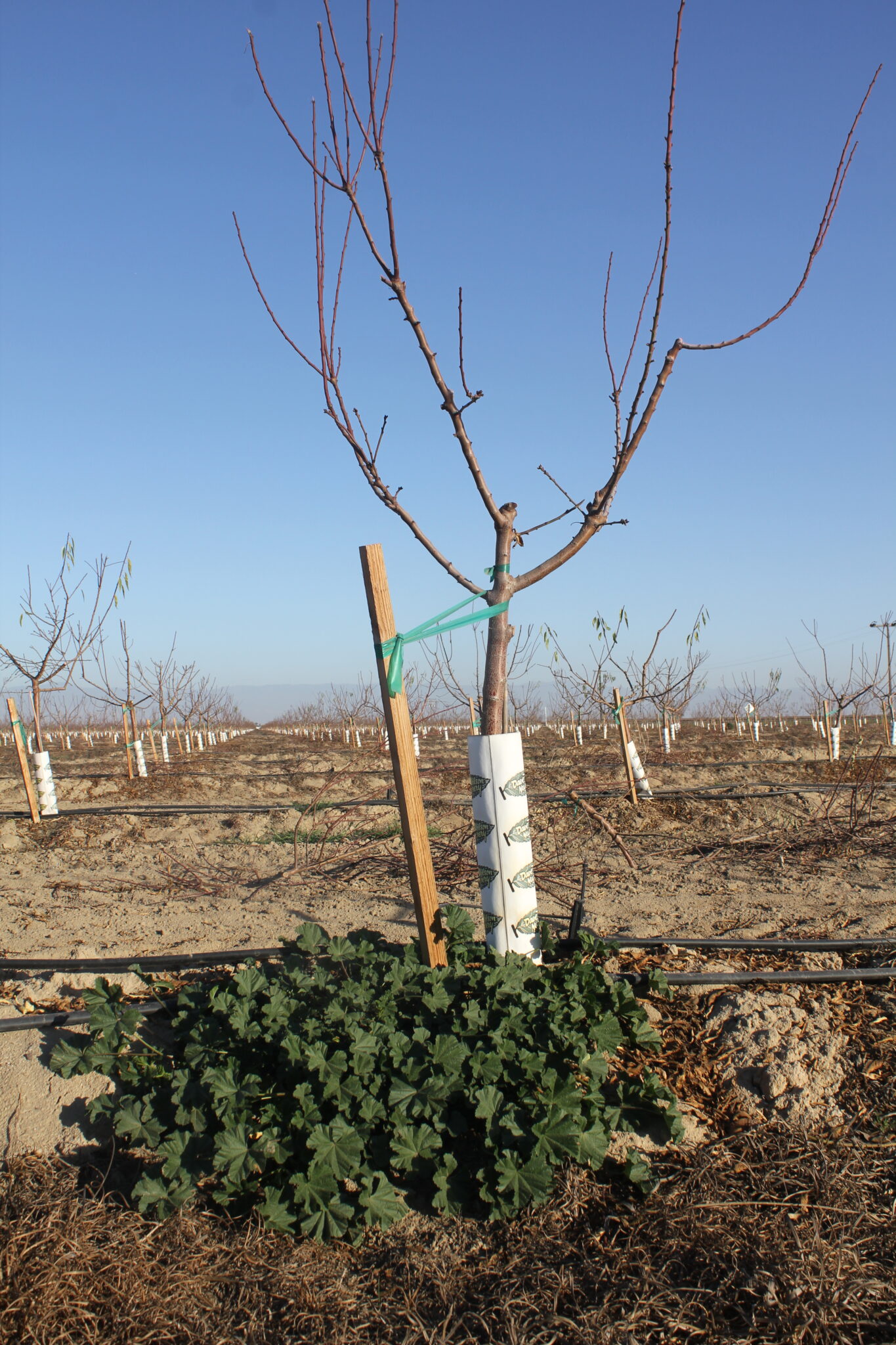
Competition with weeds for water, nutrients and sunlight can reduce tree growth in young almond orchards. With the loss of one of the most popular contact herbicides last year, growers are looking for alternatives to protect their young trees.
The UC IPM website notes that competition with weeds is most severe during the first four years of an orchard’s life. Besides tree growth, weeds can interfere with irrigation distribution and uniformity. Weeds growing close to the tree trunks provide habitat for mice and voles. A weed-free strip at least 30 inches from the trunk on each side of the tree is advised.
Achieving this weed-free strip in a new orchard became more difficult for almond growers with the loss of the broad-spectrum contact herbicide paraquat. The Environmental Protection Agency restrictions on paraquat use aimed to help protect Restricted Use Pesticide handlers, but have had a ripple effect on growers, distributors and the California agriculture community. Label changes emphasizing paraquat toxicity, use restriction and safe handling were completed in 2019. Using this herbicide now requires a specific certification requirement in addition to the state-required certification to apply.
Drew Wolter, Almond Board of California’s pest management senior specialist, noted some sound alternatives to paraquat use in young almond orchards.
Glufosinate is a non-systemic contact herbicide that provides post-emergent control of both broadleaf and grass weed species. Timing of use is important as grass species that clump are difficult to control after they have reached a more mature stage. Their basal meristem allows for regrowth after the initial burndown by the herbicide. Identification and control early will be more effective.
Wolter said there may be tank mix partners that could increase control of those grasses. Graminicides specifically target grasses. The products available for use in young orchards include clethodim (for non-bearing) and fluazifop for non-bearing and sethoxydim. All have been used in combination with glufosinate to not only provide broad-spectrum control of broadleaf weeds, but also increase control of grass species over a great set of growth stages.
Another product is oxyfluorfen, a pre-emergent herbicide that has some post-emergent activity. When this soil-applied herbicide is used with contact herbicides, the combination provides the initial ‘cleanup’ that paraquat provides, but also adds the residual control for both broadleaf and grass species.
















